“Today I Received Uyghur Girls”: Uyghur Teenagers as Victims of Human Trafficking – Bitter Winter
“Labor transfer agents” in Mainland China boast on social media that new shipments of Uyghur young women have arrived, as if they were just another commercial good.
by Gulfiye Y
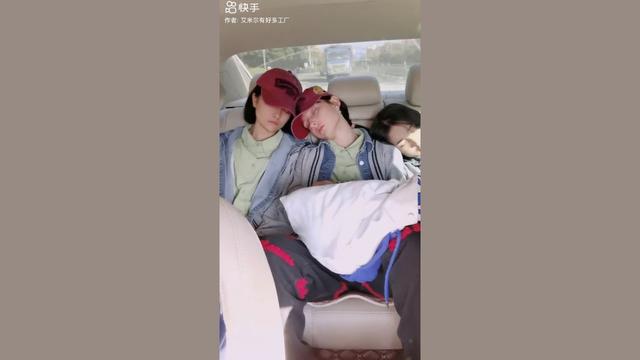
A Chinese businesswoman is proud to announce she has received three teenage “Uyghur girls” (维族Y头) from Kashgar, Xinjiang, who traveled more than sixty hours, apparently still in their school jackets and attire, to be interviewed and given a medical check-up, assigned a dormitory, and put to “work” the next day.
This was a video posted on the social media Kuaishou (literally “Quick Hand”), which has since been removed. But it can be found here.
The woman video-recorded the three sleeping girls and posted the video to the social platform with the title “Today I Received Uyghur Girls” (维族Y头). They were arriving at the Oaks Air-Conditioning Factory in Mainland China. Very professional of her … unless it was to serve another purpose. The woman appears to be part of a government-sponsored “labor transfer agency.”
Here is a translation of the video from Chinese: “Today, the three people I received are Uyghur girls from Kashgar, Xinjiang. They have been in the car for more than forty hours and they are all asleep now [She shows the image of three Uyghur girls sleeping as she repeats:] travelling in the car for more than forty hours, […] there seems to have been a transfer in the middle, and a total of more than sixty hours in the car… They are all asleep now. [Camera turned to street view] Now we are on our way to Oaks Factory and an immediate interview, will prepare the dormitory as soon as the interview is over. Tomorrow morning, we will have a physical examination and afternoon training. The day after tomorrow they can officially go to work. I wish everyone smooth work and good health.”
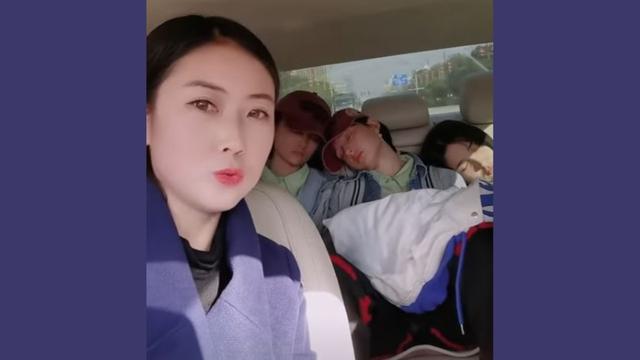
Why does the image of child / human trafficking come to mind? Could it be the youth of the girls? Or maybe the tone of the speaker along with her non-verbal signals referring to the “Uyghur girls”? The perceptible attitude that the girls are goods “received” in some commercial transaction? The posting of the video by the “labor transfer agent” seems more akin to an advertisement of the “Uyghur girls” than a workforce transaction notification.
Another video by this same “labor transfer agent” calls for Uyghurs willing to travel to Mainland China for work. This was a video posted on the social media Kuaishou (Quick Hand) that has also been removed. But it can be found here.
Translated from Chinese: “Hello everyone, Yicheng Workforce here. We expect to leave on the fifth or sixth day of the first lunar month, The Oaks (Aokesi) Air-Conditioning Factory in Nanchang, Jiangxi and the TCL Air-Conditioning Factory in Wuhan, Hubei. The age introduction target is 16 to 53, no limit of male or female, regardless of education. Of course, the first batch of departure includes a special discount on the welfare policy. There are many benefits, such as free bedding and free medical examinations, and large gift packages. Well, this is the first group of people to depart. The factory is particularly supportive, because many Han friends have not returned to work after returning home for the New Year. The factory has a large number of orders and there is also a large number of workforce shortages. Well, if you want to go, hurry up and we will organize the departure in a unified manner.”
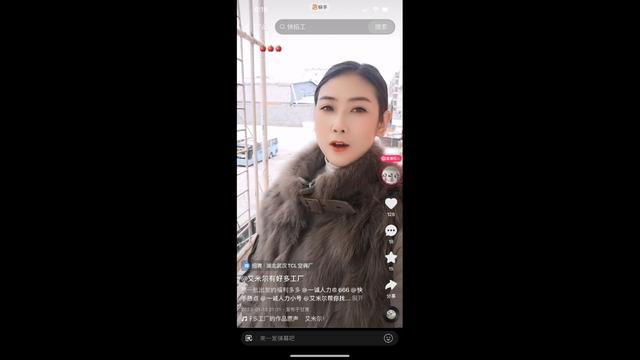
So what is the real story? The tone and presentation of the recruiter implies a voluntary and beneficial offer of gainful employment; even an enticement with benefits and “gifts.” But—what about 16-year-old?
And the three teenage girls? What could have possibly persuaded them to “voluntarily” leave their homes in Kashgar, Xinjiang, their families, their friends, their support, their world, and travel to a far side of China where their language is not spoken, but actively suppressed, and any Uyghur and Muslim is discriminated against? How long will it take for them to find that their dormitory is a fully monitored, secure prison? That they will have no freedom of moving about? That they will have to attend long study sessions with songs and chants praising Xi and the CCP? That their wages will be a fraction of what their Han co-workers earns? That they will be in debt to cover their travel expenses and other charges? That anything they say that is “unacceptable” will earn a severe punishment? And any “indiscretion” at all will send them to “re-education camps” or worse? They will experience the full force of the Sinicization policy.
The girls will be alone and unprotected, under the complete and total control of their “employers.” Any abuse they may encounter will go unpunished. Their problems have started with communication issues as seen in this video (title: “Uyghur Translator for Future Job Recruitment”). But then, with the Chinese Party-State actively involved in a campaign of forcefully assimilating Uyghurs into Han Chinese society by means of mixed marriages, these teenage “Uyghur girls” are prime candidates for such marriages.
Hong Kong Watch (HKW) and the Helena Kennedy Centre for International Justice, Sheffield Hallam University, in their recent report titled “Passively Funding Crimes Against Humanity;” offered evidence of human trafficking and compulsory labor and (at a minimum) abuse of vulnerability, deception, restriction of movement, isolation, intimidation and threats, retention of identity documents, withholding of wages, and debt bondage. The report implicates a multitude of companies, investment funds, and pension funds engaged in investments and direct involvement in constructing the Uyghur camps and surveillance systems, and in actively using Uyghur forced labor obtained through state-sponsored transfer, or sourcing from suppliers that use such forced labor.
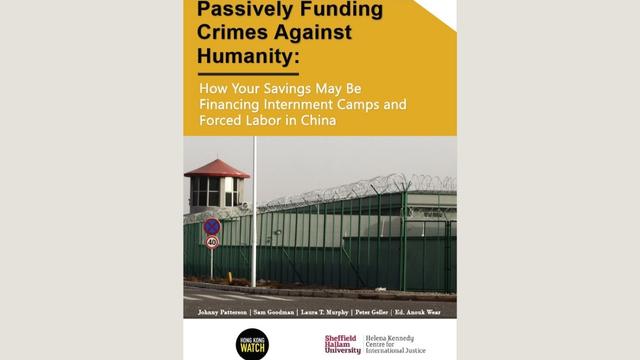
The Uyghur Tribunal in their final report made over a dozen references to “labor transfer.” No. 914: “there is evidence that suggests ‘an enormous state-engineered profit motive for companies to engage in poverty alleviation.' It appears that Han-run businesses profit from the forced labour programme. These programmes are facilitated by labour transfer agencies that can receive rewards of up to 100 yuan per person transferred.”
No. 920: “In 2021, the BBC (John Sudworth) released a report which said: ‘This overarching goal of assimilating Uyghurs into China's majority Han culture is made clear by an in-depth Chinese study of Xinjiang's job-transfer scheme. Written by a group of academics from Nankai University in the Chinese city of Tianjin, it concludes that the mass labour transfers are ‘an important method to influence, meld and assimilate Uyghur minorities' and bring about a ‘transformation of their thinking.' Uprooting them and relocating them elsewhere in the region or in other Chinese provinces, it says, ‘reduces Uyghur population density.'”
The Nankai report reveals what appears to be the real motivations—or at least part of them—of the government: “Eastern and central regions should have mandatory annual quotas of arranged Xinjiang labourers, which greatly helps to alleviate the shortage of labourers in [these regions] and appropriately reduces labour costs.” A “severely excessive number of Uyghur rural surplus labourers was caused by lax family planning policies that created an ‘excess population' representing a ‘latent threat to the current regime.'”
As evidence, you can look at a video titled “Jiangsu Food Company recruits 500 Uyghurs to Promote Positive Energy and Help Farmers”: “Hired by Jiangsu Food Company, Uyghur Jiangwai Food Co., Ltd. recruits 500 Uyghurs. Master plan: the first batch of fifty people. The second batch of hundred people.”
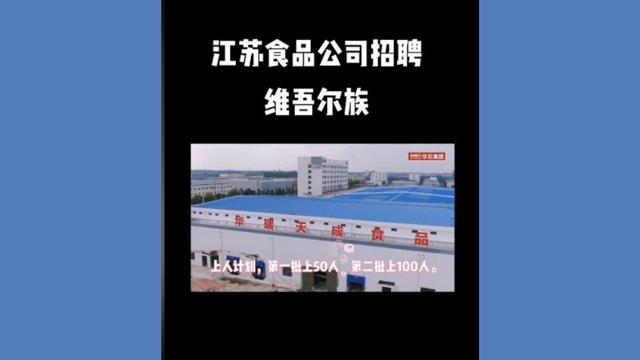
Now, compare that recruitment in South-East China to one in Urumqi reported by RFA: “Xinjiang: An American fast-food restaurant's job advertisement (for Urumqi) excludes ethnic minorities in Xinjiang. The CCP has adopted a discriminatory policy in Xinjiang, not only excluding ethnic minorities … from official positions, but now applied to private companies as well. ‘Pizza Hut Bo Bakery,' an American fast-food restaurant in Urumqi, issued a job advertisement stating that it is recruiting thirty Han, Hui and Mongolian waiters, as well as part-time students, with an hourly salary of 12.8 yuan. … the employment of ethnic minorities must first go through political review. Even general work has ethnic discrimination.”
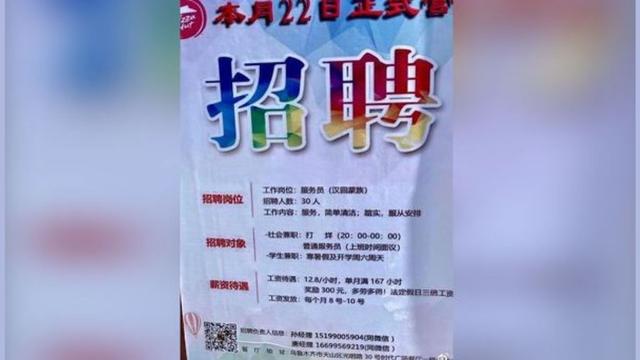
The Uyghur Tribunal's final report adds in No. 924, by quoting researcher Adrian Zenz: “New evidence from the Nankai Report, other Chinese academic publications and publicly available government documents provides strong proof of the systemically coercive nature of Xinjiang's labour transfer programs and underscores a process-oriented approach towards designating such programs to be forced labour. These sources also show that the primary aims of labour transfers are not economic, but political and demographic. Government documents state that labour transfers are part of ‘raising population quality.'”
And in no. 926: “The study [Nankai report] explained how the People's Republic of China (PRC) has placed millions of indigenous Uyghur and Kazakh citizens from the Xinjiang … into what the government calls ‘surplus labour' (富余劳动力) and ‘labour transfer' (劳动力转移) programmes. An official PRC government report published in November 2020 documents the ‘placement' of 2.6 million minoritised citizens in jobs in farms and factories within the Uyghur Region and across the country through these initiatives. The government claims that these programmes are in accordance with PRC law and that workers are engaged voluntarily, in a concerted government-supported effort to alleviate poverty. However, significant evidence – largely drawn from government and corporate sources – reveals that labour transfers are deployed in the Uyghur Region within an environment of unprecedented coercion, undergirded by the constant threat of re-education and internment. Many indigenous workers are unable to refuse or walk away from these jobs, and thus the programmes are tantamount to forcible transfer of populations and enslavement.”
As for the three teenage “Uyghur girls,” I cannot imagine that they will have “smooth work and good health.” What future awaits these teenage “Uyghur girls”?
 ABOUT PBJ LEARNING
ABOUT PBJ LEARNING
PBJ Learning is a leading provider of online human trafficking training, focusing on awareness and prevention education. Their interactive Human Trafficking Essentials online course is used worldwide to educate professionals and individuals how to recognize human trafficking and how to respond to potential victims. Learn on any web browser (even your mobile phone) at any time.
More stories like this can be found in your PBJ Learning Knowledge Vault.
This “Eyes on Trafficking” story is reprinted from its original online location.
ABOUT PBJ LEARNING
PBJ Learning is a leading provider of online human trafficking training, focusing on awareness and prevention education. Their interactive Human Trafficking Essentials online course is used worldwide to educate professionals and individuals how to recognize human trafficking and how to respond to potential victims. Learn on any web browser (even your mobile phone) at any time.
More stories like this can be found in your PBJ Learning Knowledge Vault.
